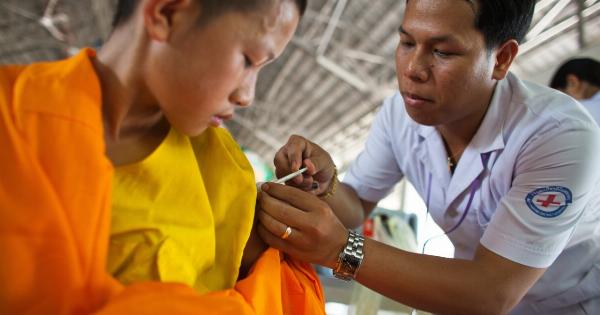Skin conditions can be a source of discomfort, embarrassment, and even pain for many individuals. Whether it’s a rash, acne, eczema, or any other skin issue, the impact on one’s self-esteem and overall well-being can be significant.
Keeping a photo diary of these conditions can be a helpful tool in monitoring their progress, identifying triggers, and seeking appropriate treatment. In this article, we will explore the benefits of maintaining a photo diary for skin conditions and how it can aid in managing and understanding the various skin concerns.
1. What is a Photo Diary?
A photo diary is a collection of images that document the external appearance of a specific condition over time. By taking regular pictures, individuals can visually track the changes and progression of their skin issues.
These photos serve as visual evidence of the condition and can be shared with healthcare professionals to provide a clearer understanding of the problem.
2. Benefits of a Photo Diary for Skin Conditions
2.1 Monitoring Progress.
A photo diary allows individuals to analyze their skin’s response to different treatments, lifestyle changes, or environmental factors.
By comparing images taken at different intervals, it becomes easier to identify patterns and determine what works best for managing a specific condition.
2.2 Identifying Triggers.
By observing the pictures in the photo diary, individuals may spot common triggers that exacerbate their skin conditions. These triggers could include certain foods, stress, weather conditions, or specific skincare products.
Recognizing these triggers empowers individuals to make informed choices that can minimize flare-ups.
2.3 Seeking Professional Advice.
Sharing the photo diary with dermatologists or healthcare professionals provides them with a comprehensive visual representation of the condition’s severity and progression.
This visual aid can aid in accurate diagnoses, effective treatment plans, and timely interventions.
2.4 Feeling Empowered.
A photo diary can be a powerful self-care tool that allows individuals to actively participate in their skin’s management.
It promotes a sense of empowerment, as individuals take control of their condition by analyzing the visual evidence and making informed decisions about their skincare routines.
3. Best Practices for Maintaining a Photo Diary
3.1 Consistency is Key.
Take photos regularly and at the same time each day to ensure consistent lighting and conditions. This will help uncover patterns and changes that may otherwise go unnoticed.
3.2 Choose a Convenient Platform.
Select a platform to store your photos that works well for you. It could be as simple as organizing them in a dedicated album on your phone or using specialized apps designed for tracking skin conditions.
3.3 Capture Key Information.
Alongside each photo, note down any pertinent information such as date, time, potential triggers, current skincare products, or treatments used.
This additional context will provide a deeper understanding of the factors influencing your skin’s appearance.
3.4 Consult with Professionals.
While a photo diary is a useful tool, it should not replace professional medical advice. Regularly consult with dermatologists or healthcare professionals to assess and tailor treatment plans based on the visual evidence provided by your photo diary.
4. Common Skin Conditions and Their Photo Diary
4.1 Acne.
Acne breakouts can vary in severity, type, and location. Maintaining a photo diary can help track changes in acne patterns, identify triggers (such as certain foods or stress), and evaluate the effectiveness of different treatments over time.
4.2 Eczema.
Individuals with eczema often experience flare-ups and periods of remission. A photo diary can aid in spotting triggers, whether they be environmental, dietary, or related to skincare products.
It allows individuals to identify trends in their eczema patterns and find the most appropriate long-term management strategies.
4.3 Psoriasis.
Psoriasis is a chronic skin condition characterized by red, scaly patches. Keeping a photo diary can help individuals observe how different treatments affect the severity and size of the patches.
Additionally, it assists healthcare professionals in identifying the most effective treatments based on the visual evidence provided.
5. Emotional Support and Community
Living with a skin condition can be emotionally challenging. Sharing your photo diary with others who have similar skin concerns can provide emotional support and foster a sense of community.
Online platforms and forums dedicated to specific skin conditions offer opportunities for individuals to connect, share experiences, and learn from one another’s photo diaries.
6. Protecting Privacy and Confidentiality
Maintaining a photo diary requires attention to privacy and confidentiality. It is important to keep your images secure and only share them with trusted healthcare professionals or designated online support groups.
When posting online, use anonymous usernames or blur identifying features to protect your identity.
7. Celebrating Progress
Maintaining a photo diary allows individuals to reflect upon their progress and how far they have come in managing their skin conditions.
Celebrating milestones and successes can boost self-confidence and serve as a reminder that persistence and a proactive approach can lead to positive outcomes.
8. Conclusion
A photo diary is a valuable tool for monitoring and managing various skin conditions. It empowers individuals by visually tracking changes, identifying triggers, seeking professional advice, and participating actively in their own care.
By documenting the journey through images, individuals gain insights, make informed decisions, and facilitate effective communication with healthcare professionals. Consider starting a photo diary to gain a better understanding of your skin condition and improve your overall well-being.






























